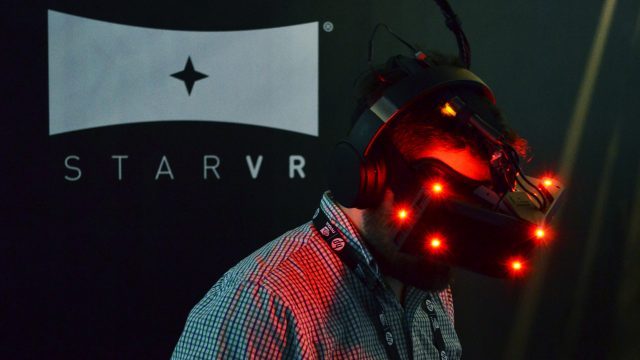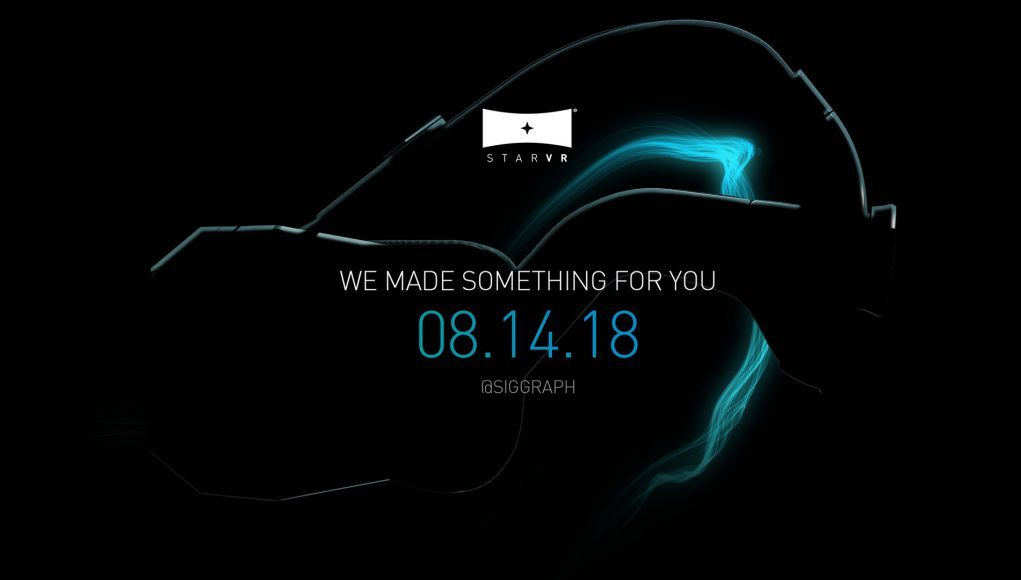StarVR, creator of a high-end VR headset for out-of-home use, is teasing something new to be revealed next week at SIGGRAPH 2018.
StarVR is a high-end headset made for out-of-home use like VR arcades and attractions. The headset’s main selling points are its ultra wide field of view and high resolution which is achieved thanks to a pair of widescreen displays. We’ve been impressed with what the company has been able to achieve with the headset to date, and now it looks like something new is coming.
The official StarVR website is now taken over by a fullscreen teaser showing the silloughette of a headset and the words “We made something for you,” followed by the date August 14th, 2018 and an indication that the reveal will happen at the SIGGRAPH 2018 conference.
It isn’t clear if whatever is revealed will be positioned as an entirely new headset or just an updated version of what came before, but the silhouette appears to show a design that’s quite the departure from whast we’ve seen previously, now with a much more substantial headstrap (replacing the soft strap of prior iterations), complete with an easy adjustment knob in the back.

Last time we got a good hands on with StarVR, the company told us they were working on bumping up the refresh rate from it’s relatively low 62Hz to something higher, which could lead to reduced latency and a greater feeling of smoothness in the visuals. The company also said they were planning to support a multitude of tracking systems (rather than the PhaseSpace system that was being demoed at the time), so it seems likely that a multi-modal approach to tracking may be part of whatever the company plans to reveal next week.







